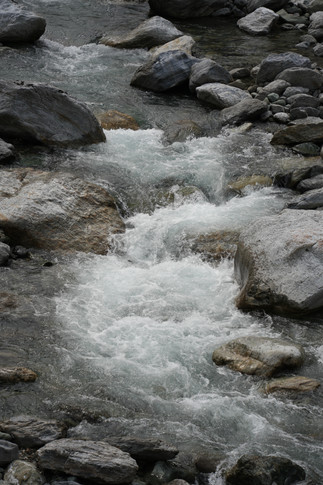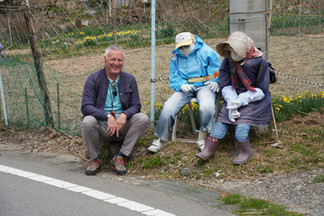IYA VALLEY
- chuckmeltzer
- Jun 4
- 3 min read
Updated: Jun 24
Taking a ferry is a very pleasant way to get to your next destination. We proceeded to Mount Koya and the Iya Valley by ferry across to Shikoku, the smallest of Japan’s main islands. First we will talk about highlights from the Iya Valley.
We attended a dance performance in the town of Tokushima at the Awa Odori Kaikan Museum. Dance has been a significant aspect of the local culture for 400 years. The dancers were graceful and athletic, and although they weren't on par with Balanchine and the NY City Ballet, they were enjoyable to watch.
For the next two nights in the Iya Valley, we stayed at a ryokan, a traditional Japanese inn called Hotel Hikyonyu, which featured an onsen, an on-site hot spring bath. The onsen was very relaxing, but the inn itself was simple and not exactly the 4 or 5-star lodging we prefer, with prefab bathrooms, but we managed to add a couple of extra futons for more padding, the room was not cold, so we slept better.
National Geographic didn't score well for our accommodations, and truthfully, except for our hotel at the next stop, they didn't meet my rather high expectations for hotels when we travel. However, Nat Geo excelled in taking us to places and sites, like the Iya Valley, that we might not have discovered on our own. It's not easy being me, and I enjoy treating us to beautiful and comfortable hotels when we travel. I wouldn't recommend Nat Geo for future trips, as the value of the lodging compared to the cost wasn't favorable for the client. I think Nat Geo should hire a couple of discerning individuals, like us, to evaluate where to accommodate their clients; maybe I should apply?
Nonetheless, we made the best of it and enjoyed wearing our traditional kimonos again for dinner.
We traveled along the steep slopes of the Iya Valley to a ravine with a 300-year-old thatched farmhouse, part of the Chiiori Trust, a unique project that seeks to preserve age-old rural traditions in the valley.
While cruising through the valley, we paused briefly at a small village, Nagoro, with around a dozen residents and hundreds of scarecrows. An elderly woman, Tsukimi Ayano, has transformed the village into a town of the unliving to keep her company. It was both beautiful and somewhat eerie; not a place to visit on Halloween, but perfect for a Friday the 13th sequel.
We continued to the Double Vine Bridges known as Oku Iya Niju Kazurabashi, twin suspension bridges made of intertwined vines. I am not a fan of crossing these swaying bridges; but if you don’t look down between the slats, it is doable.
A delightful 80-year-old lady prepared our lunch and entertained us with a traditional folk song. She truly embodied the essence of life in a blue zone. The tempura was amazing!!
We continued on to have tea in a village in Ochiai, a community featuring traditional homes, some of which date back to the Edo period (around 1600-1870). The couple and their friend who served us were all in their 80s; once more, blue zone rules!
We traveled north to Zentsuji Temple revered as the birthplace of the Buddhist priest Kobo Daishi. Kobo Daishi founded the Shingon school of Japanese Buddhism. As I commented earlier, there are many schools of Buddhism all with a goal of reaching enlightenment.
We wandered through the gardens of the 17th-century Ritsurin Park. The beauty and serenity of the numerous gardens and parks we explored is likely my top highlight from Japan. The garden features over 1,400 pine trees, most of which are pruned by the gardeners to resemble large, elegantly curved bonsai.





















































































































































Comments